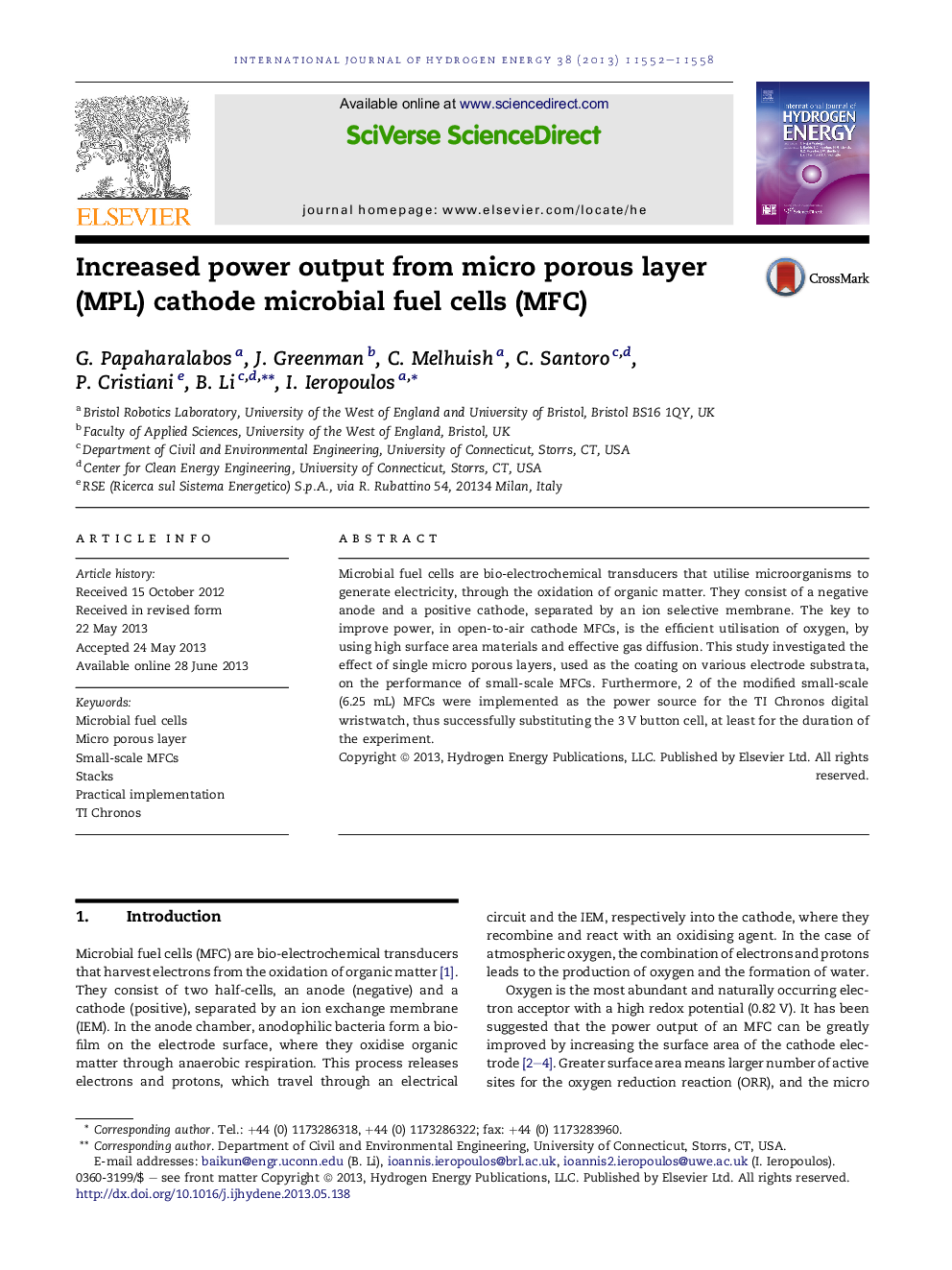| Article ID | Journal | Published Year | Pages | File Type |
|---|---|---|---|---|
| 7722044 | International Journal of Hydrogen Energy | 2013 | 7 Pages |
Abstract
Microbial fuel cells are bio-electrochemical transducers that utilise microorganisms to generate electricity, through the oxidation of organic matter. They consist of a negative anode and a positive cathode, separated by an ion selective membrane. The key to improve power, in open-to-air cathode MFCs, is the efficient utilisation of oxygen, by using high surface area materials and effective gas diffusion. This study investigated the effect of single micro porous layers, used as the coating on various electrode substrata, on the performance of small-scale MFCs. Furthermore, 2 of the modified small-scale (6.25Â mL) MFCs were implemented as the power source for the TI Chronos digital wristwatch, thus successfully substituting the 3Â V button cell, at least for the duration of the experiment.
Related Topics
Physical Sciences and Engineering
Chemistry
Electrochemistry
Authors
G. Papaharalabos, J. Greenman, C. Melhuish, C. Santoro, P. Cristiani, B. Li, I. Ieropoulos,
